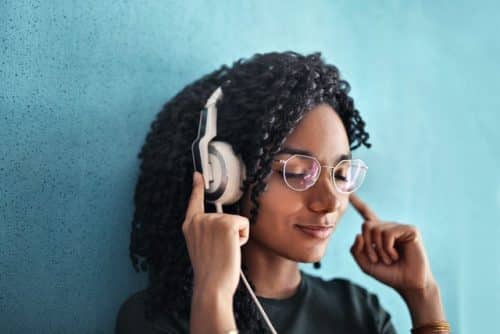There are always new trends that become viral in the blink of an eye, one of these is the rise in ASMR and we would like to share what parents need to know about it. I bet if you asked your teenager right now about this, he or she is likely to know about ASMR.

What is ASMR?
ASMR is probably the largest YouTube trend that parents are not aware of. According to ThinkwithGoogle; ASMR is a massive and a growing trend. There is more search interest on YouTube for ASMR than for “candy” or “chocolate.
Coined in 2010, ASMR which is the acronym for “autonomous sensory meridian response” is a relaxing, often sedative sensation that begins on the scalp and moves down the body. Also known as “brain massage,” it’s triggered by placid sights and sounds such as whispers, accents, and crackles.
According to Heather Feather, a popular “ASMRtist” it basically feels like the amazing chills you get when someone plays with your hair or traces your back with their fingertips.
The popularity of ASMR videos
The most-watched ASMR video on YouTube currently boasts 81.5 million views and explores more than 50 non-verbal triggers across three hours, including brushing microphones, tapping on the surface of an umbrella, and clipping tweezers. There are currently about 5.2 million ASMR videos on YouTube
Effects of ASMR
ASMR fans claim the feeling they get from the videos helps them unwind and deal with anxiety – and a recent study by researchers at the University of Sheffield and Manchester Metropolitan University discovered that watching ASMR videos significantly reduces heart rates among those who experience the phenomenon.
Test subjects also reported more positive emotions, like excitement and calmness; and fewer negative ones, like stress and sadness. They also reported increased feelings of social connection.
What Parente need to do if your child watches ASMR
If your child watches ASMR there are some simple ways to make sure they stay safe and that they aren’t exposed to anything inappropriate:
- Find out why they’re seeking out the videos. Maybe they like the tingling feeling but they could be worried about something or struggling to sleep. You probably know your child better than anyone – if there’s a problem, you may be able to help.
- Share how you look after yourself when you’re stressed or overwhelmed. You may already be using technology to relax. This might be through a meditation app like Headspace, or perhaps you watch shows on Netflix. You could also listen to calm music while you soak in a bubble bath.
- Ask them what ASMRtists they like to watch and check out their videos. You may like them too. Many ASMR videos encourage viewers to think positively, practise mindfulness or meditation, and learn breathing exercises. Others are less openly therapeutic, but create imaginative scenes and characters that viewers can return to.
- If they’re under 13, sign them up for YouTube Kids, a family-friendly version of the platform where you can customise their experience, curate what they see, set timers, and block specific videos or channels. You can find out more about YouTube Kids in this parent guide.
Types of ASMR
The sole purpose of ASMR is to relax people. The ASMR community is constantly growing on Youtube. Ideally, ASMR videos are meant to give the viewer a relaxing tingle at the back of their head and/or spine.
ASMR videos usually involve one or more of the following things: Gentle whispering, Relaxing hand movements, Smacking of the lips, Nail tapping/scratching on hard surfaces such as tables and Brushing sounds.
Overall, ASMR could be a harmless way to relax. However, be aware of potential dangers.
A handful of ASMRtists make explicit videos on different platforms. So be sure to have general conversations with your child about appropriate online safety habits.
Read Also: 5 Tips you Need to Protect your Child’s Digital Footprint
Other posts in the Technology and Parenting category




